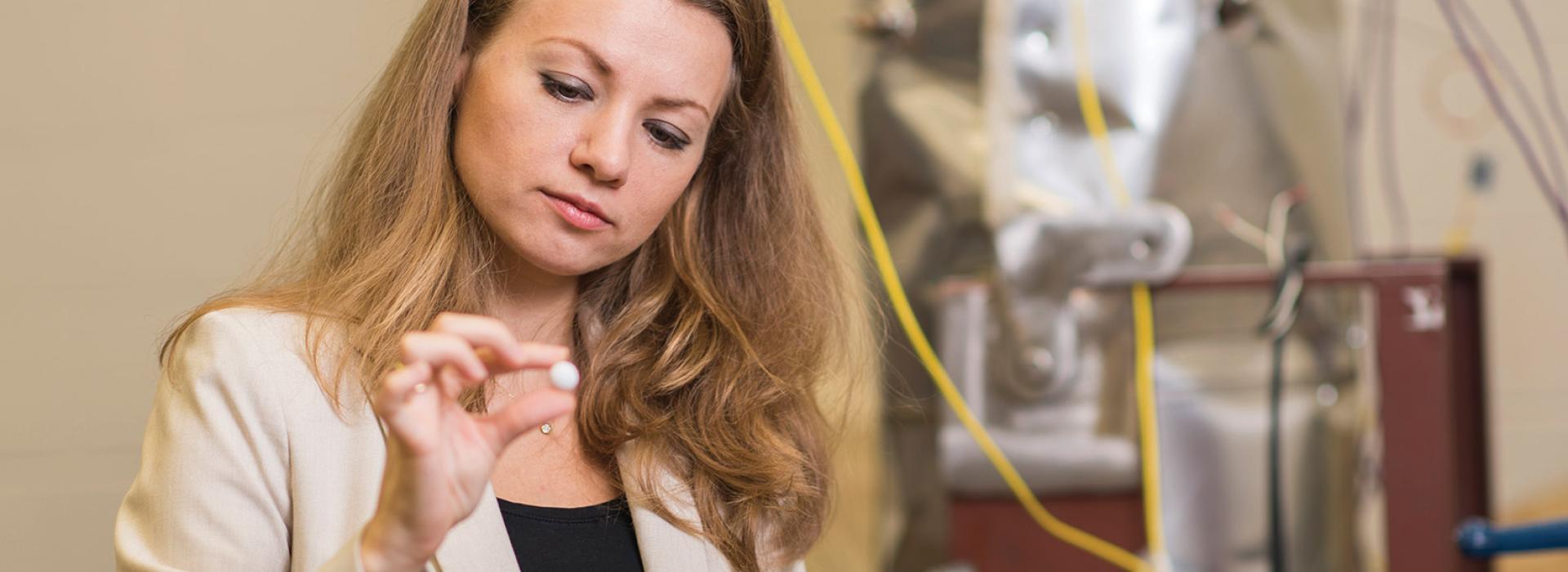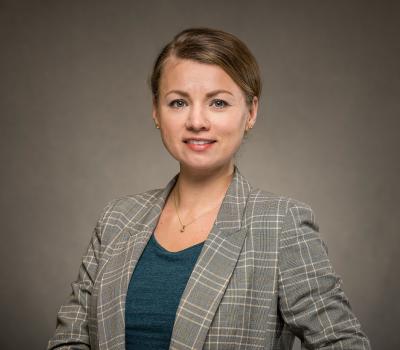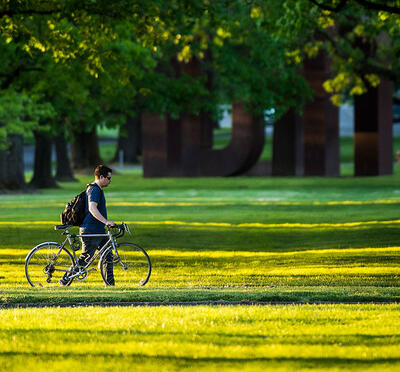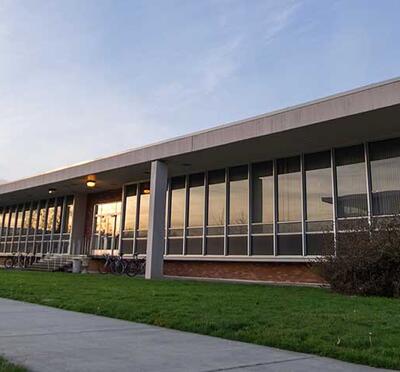Izabela Gutowska holds a mock fuel sphere used in simulated testing to support validation of Kairos Power’s pebblebed fluoride-salt-cooled high-temperature reactor design.
Izabela Gutowska swirls the tea in her cup as she discusses computational fluid dynamics. The movement of the tea cools the liquid by transferring heat to the cup, she explains.
“Fluid dynamics, and especially thermal hydraulics, are present in every engineering system. They’re applicable in not just nuclear systems, but also in your car’s internal combustion engine, your air conditioning system, and even your coffee maker,” she said. “They’re everywhere.”
Last year, Gutowska brought her fascination with fluid dynamics back to the College of Engineering’s School of Nuclear Science and Engineering, where she earned her doctorate in nuclear engineering in 2015. She joined the faculty as an assistant professor of nuclear engineering.
Gutowska’s research focuses on fluid flow and heat transfer as they apply to different types of nuclear power plants, including pressurized and boiling water reactors, small modular reactors, and generation IV reactors, the newest designs on the drawing board. Gutowska grew up in Poland and decided from an early age to pursue a career track in math and physics. Both her parents were surveyors; as a child, Gutowska had the chance to accompany her dad on numerous projects.
“He was always taking me out with him to perform measurements — assessing the land and measuring elevations — and other simple tasks,” she said.
Gutowska pursued a bachelor’s degree in power engineering with a focus on information technology systems at Warsaw University of Technology. As she was considering her next move following graduation, Poland was in the midst of rebuilding its nuclear program and in need of skilled engineers.
“It sounded really attractive to me, to be a tiny puzzle piece in this huge rebuilding project and to be able to make an impact,” she said.
So, she continued at Warsaw University of Technology to pursue a master’s degree in nuclear engineering. During her studies, Gutowska had the opportunity to work with nuclear scientists and engineers from all over the world and study with them in English. At the time, Warsaw University of Technology developed a partnership with Oregon State University. With these new contacts in hand, and her confidence in speaking English on the rise, Gutowska headed to Oregon State for an internship.
When it came time to do her doctorate, Gutowska sought educational opportunities outside Poland. She was awarded a Fulbright scholarship to study abroad and knew exactly where she wanted to go.
“It was pretty obvious to me that I wanted to come back to Corvallis, because I really like Oregon State,” she said. “I like the atmosphere, and I enjoy working with the faculty here.”
She reached out to Brian Woods, professor of nuclear science and Henry W. and Janice J. Schuette Chair in Nuclear Engineering and Radiation Health Physics, and began her doctoral program in 2012. Woods’ research focus includes gas-cooled reactors. As part of Woods’ research team, Gutowska quickly got involved in projects using the High Temperature Test Facility. She designed a safety system for mitigating air ingress to the reactor core.
After completing her degree, she worked briefly as an advanced computational fluid dynamics engineer at GE Power, before coming back to Oregon State to manage the HTTF’s quality assurance program, assist in testing, and lead the thermal hydraulic modeling activities.
In April 2019 she was hired as an assistant professor. She said it wouldn’t have happened without interacting with great mentors.
“Professor Woods taught me that I should never stop working hard for my dreams and that the best way to discover my path is to walk it, sometimes unprepared yet ready to take the next step,” Gutowska said.
Gutowska is now diving into independent research. She’ll focus on optimizing fluid flow and heat transfer in nuclear reactors to enhance operation and performance while complying with safety features.
Her first project involves a partnership with Kairos Power. She will lead a team of researchers in the development of a pebble-bed fluoride-salt-cooled high-temperature reactor. This novel reactor converts heat from fission to electricity using an efficient steam cycle, boosting nuclear energy innovation while complementing renewable energy sources. Her team will be responsible for designing and building a separate effects test facility at Oregon State in order to provide data for codes validation for Kairos.
Gutowska appreciates the unique research atmosphere at Oregon State and describes her colleagues as a second family. She encourages prospective students, especially women, to not feel overwhelmed when they hear “nuclear engineering” and to consider pursuing careers in the field of engineering in general.
“Engineering is something that we are fully capable of doing, and having this diverse group of people in the School of Nuclear Science and Engineering really helps in driving forward advanced, highquality, interesting projects,” she said. “Women engineers are an integral part of successful projects here at Oregon State.”
Gutowska said the cooperation and support of the school and her colleagues have helped her to find a place at Oregon State. She added that she is always willing to speak to prospective engineering students if they have questions about the degree and their future.
“At Oregon State there are so many initiatives, support groups, and groups of interest to join, to expand your knowledge and to be present and visible to others,” she said. “Just go for it.”




